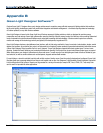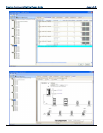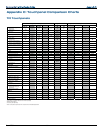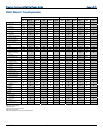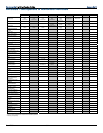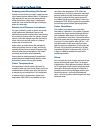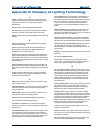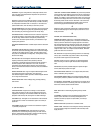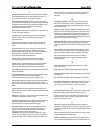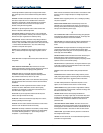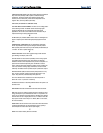
Commercial Lighting Design Guide Appendix E
Doc 4775A 102
TUNGSTEN HALOGEN LAMP: A gas-filled tungsten filament incandescent
lamp with a lamp envelope made of quartz to withstand the high
temperature. This lamp contains some halogens (namely iodine,
chlorine, bromine, and fluorine), which slow the evaporation of the
tungsten. Also, commonly called a quartz lamp
TWIN-TUBE: (SEE COMPACT FLUORESCENT LAMP)
TWO-WIRE ANALOG POWER DIMMING: Two-wire is a line-voltage phase-
control dimming method. The ballast receives the dimming signal
through the Dimmed Hot wire. Intended for small-scale retrofit
applications, the two-wire control method is often the easiest way to
implement dimming in existing fluorescent fixtures
U
ULTRA VIOLET (UV): Invisible radiation that is shorter in wavelength and
higher in frequency than visible violet light (literally beyond the violet
light)
UNDERWRITERS' LABORATORIES (UL): An independent organization
whose responsibilities include rigorous testing of electrical products.
When products pass these tests, they can be labeled (and advertised) as
"UL listed." UL tests for product safety only
V
VANDAL-RESISTANT: Fixtures with rugged housings, break-resistant
type shielding, and tamper-proof screws
VCP: Abbreviation for visual comfort probability. VCP is a rating system
for evaluating direct discomfort glare. This method is a subjective
evaluation of visual comfort expressed as the percent of occupants of a
space who will be bothered by direct glare. VCP allows for several
factors: luminaire luminances at different angles of view, luminaire size,
room size, luminaire mounting height, illuminance, and room surface
reflectivity. VCP tables are often provided as part of photometric reports
VERY HIGH OUTPUT (VHO): A fluorescent lamp that operates at a "very
high" current (1500 mA), producing more light output than a "high
output" lamp (800 mA) or standard output lamp (430 mA)
VOLT: The standard unit of measurement for electrical potential. It
defines the "force" or "pressure" of electricity
VOLTAGE: The difference in electrical potential between two points of an
electrical circuit
W
WALLWASHER: Describes luminaires that illuminate vertical surfaces.
WATT (W): The unit for measuring electrical power. It defines the rate of
energy consumption by an electrical device when it is in operation. The
energy cost of operating an electrical device is calculated as its wattage
times the hours of use. In single-phase circuits, it is related to volts and
amps by the formula: Volts x Amps x PF = Watts. (Note: For AC circuits,
PF must be included.)
WORK PLANE: The level at which work is done and at which illuminance
is specified and measured. For office applications, this is typically a
horizontal plane 30 inches above the floor (desk height)
Z
ZENITH: The direction directly above the luminaire




